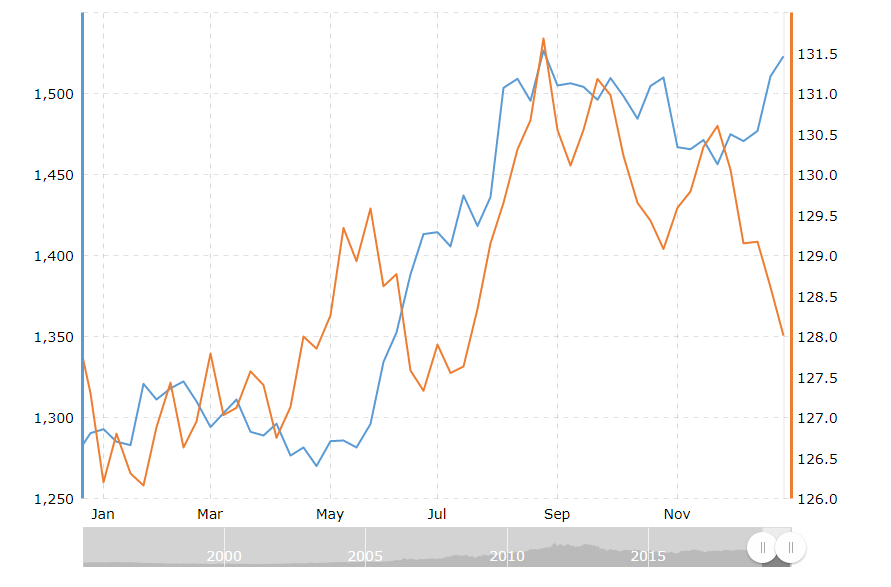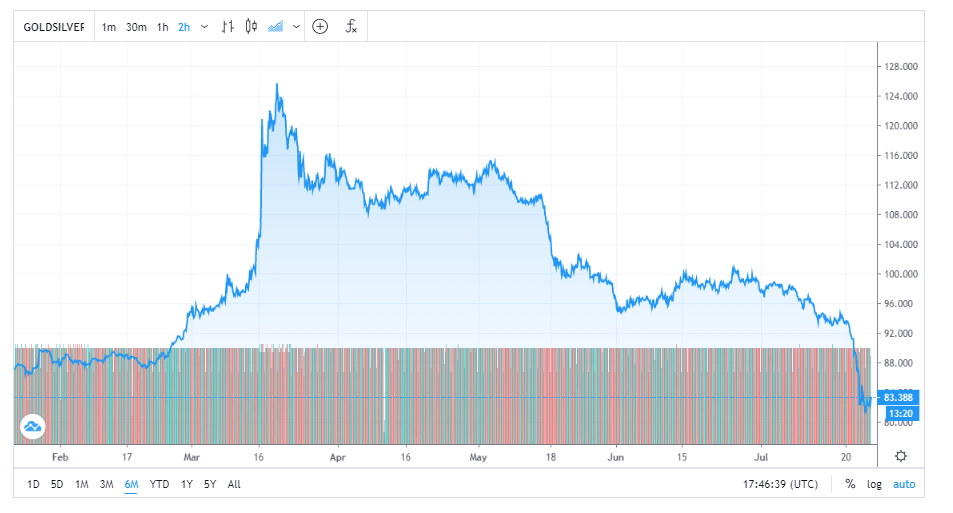This week, gold and silver continue to make sweeping historical moves. On one hand, the gold price broke through first $1850, then $1900 within two days. On the other hand, the silver price exceeded $20 on July 20th, then saw $21, $22, and $23 in the following days. Although the silver price doesn’t seem much more significant as compared to the gold price, silver actually increased faster. Therefore, silver is currently outperforming gold. So what caused this monumental change with gold and silver?
Precious metals such as gold and silver are “safe haven” assets. This is because these metals are precious, highly liquid, low-risk, and carry their own values. Since the production of precious metals is controlled, their supply is balanced, which helps retain their prices. However, COVID is one major factor that helped spike precious metals’ prices. In addition to gold and silver, platinum is up this week.
Because COVID cases are on the rise in the US and other major countries, economic fears continue to grow. When investors worry about the future of the economy, particularly the stock market, they often turn to precious metals. Not only are investors stressing over the stock market at this time, but also they are responding to the 18th-week straight rise of new unemployment claims. This means that a U-shaped economic recovery is looking less and less likely.
So, at this time, many seasoned collectors are continuing to bolster their collections. On top of that, new investors are jumping in too. This saturation in demand helps boost all precious metals at this time as people look to diversify with different kinds of metals.
Weakening US Dollar
The second major influence on the price of gold and silver is a weakening US dollar.

On this chart, the blue line represents gold, and the orange line is the US Dollar. As you can see, gold shows far more strength than the dollar in 2020. This is typical because of the inverse relationship between gold and the dollar.
Why is the US Dollar strength falling? As analysts have been saying for months now, the COVID crisis is drowning the US dollar since the Fed keeps printing money. Gold and silver are reacting to the second wave of COVID in the US, and investors seem to realize that the true economic fallout has not yet even begun. Inflation is not fully realized because the economy is not completely reopened.
Additionally, overvalued equities weigh heavily on the gold and silver price. We understand this because the Federal Reserve and European Central Bank’s balance sheets expanded to about $14.03 trillion, which flows into equities. As the closely trading gold and silver price grow together, all that can get in the way is a sudden cure for COVID-19 or a U-shaped recovery.
Oil vs. Gold and Silver
There are many other commodities that also influence gold and silver. The primary one making moves right now is oil. This week, there was an unexpected rise in US Crude inventories, but demand is falling as coronavirus cases re-sweep the country. On top of that, crude inventories rose by 4.9 million barrels last week. Basically, demand is once again tapering off so supply is steadily increasing once again, meaning that the oil recovery will continue to be slow. Investors tend to want to make money off commodities, so they turn to other sources, like gold and silver.
On top of that, the new dispute between Washington DC and Beijing pressures prices. Tensions between the US and China are on the rise, both seemingly forgetting their trade deal due to COVID. The latest development in this rising conflict is the US demand for the Chinese Consulate to shut down in Houston, TX. China responded by ordering the shut down of the American Consulate in Chengdu. So how does this factor into oil? To sum up, China buys oil from the US. If the trade deal is not honored, the US may see a massive increase in supply but lower demand for oil.
On another front, Iraq, the world’s 2nd largest producer, persistently produces oil. Iraq is not honoring the OPEC-led pact to lower supplies of oil. Therefore, a surplus of oil is likely incoming, so keep an eye out for more information with oil. Lukman Otunuga, the senior research analyst at FXTM said “Given the state of the global economy and rising coronavirus cases in the United States, oil remains exposed to downside risks.”
If a vaccine to cure COVID-19 is speedily found and distributed, the oil price will likely be able to recover. As for the moment, further cuts to oil production will see a drop from 9.7 million barrels per day to 7.7 million barrels in August worldwide.
Is Now a Good Time to Buy Gold and Silver?
To sum up, the factors mostly contributing to gold and silver are:
- Rising COVID cases
- Continued rise of unemployment
- Weakening USD, especially because of inflation
- Oil supply increase and weakening demand, in conjunction with the escalating tensions between the US and China.
Today’s economic climate is highly volatile. So, is now really a good time to buy gold and silver with such a high price tag? If you can afford it, it could be a good idea to buy now and start stocking up. This way, you have a wealth hedge against the weakening USD. Silver is looking particularly attractive because it is more affordable to a wider audience than gold is. Not only are there more investors and more demand, but also silver is finally catching up to gold’s moves through the gold-to-silver ratio.

The March high of 125:1 with the gold-to-silver ratio is now significantly lower at approximately 83:1. So instead of 125 troy ounces of silver equalling gold, now only 83 ozt is valued at the same price as gold. Within four months, this degree of change is truly remarkable.
What’s Next for Gold and Silver?
True resistance for the silver price will occur when silver closes at $25 per ozt for September futures. Additionally, gold can easily push to $2000 in this climate, according to Marc Chandler, the Chief Market Strategist at Bannockburn Global Forex. Consequently, as gold gains, so too does silver. It is also worth noting that platinum is on the rise, and its next resistance is at $1000 for October futures. Since the dollar is expected to continue moving lower, these prices are not unlikely to occur in the coming months.
However, keep in mind that a price correction might occur in future years. Sell-offs later will lead to a decrease in price for gold and silver, but it is unclear when this will happen. What can keep precious metals prices afloat is the demand on Asian fronts, namely China and India. Gold in India and China is consumed at high rates since gold is an important part of weddings in India, and it is considered good luck to own in China. Therefore, a price correction as demand tapers off in the West in this case would likely not incur losses.

